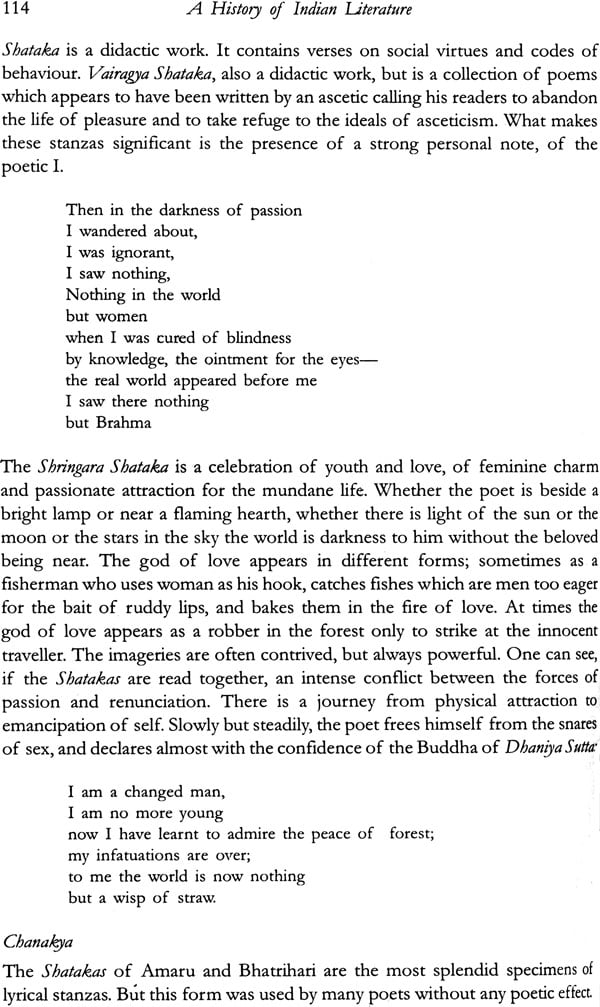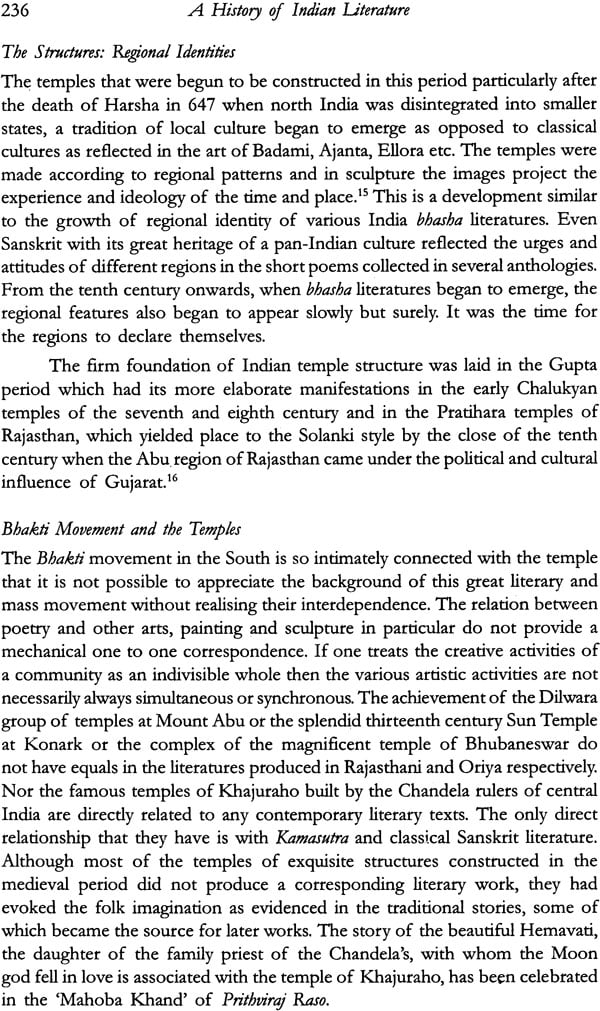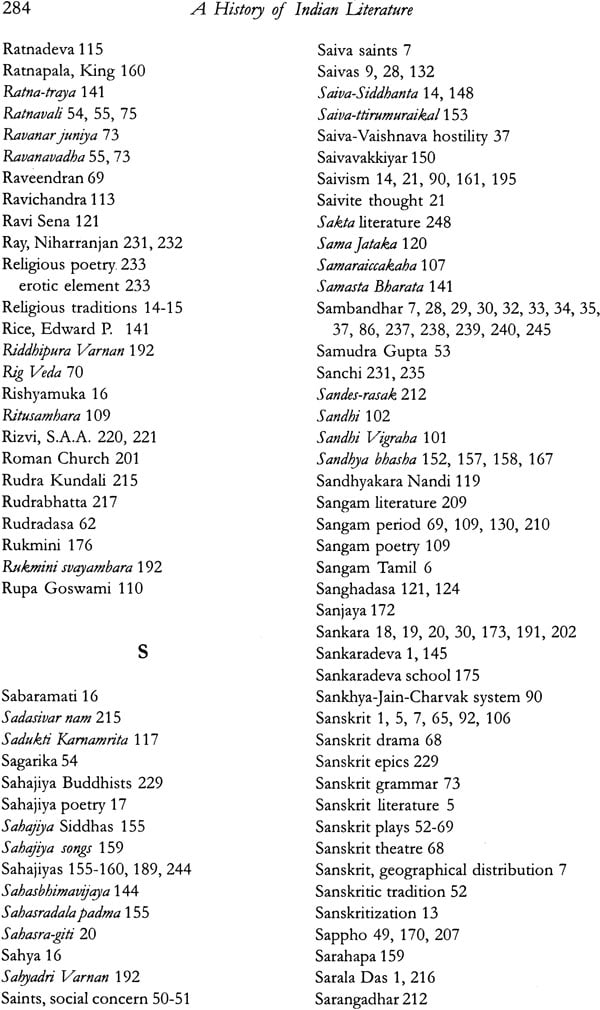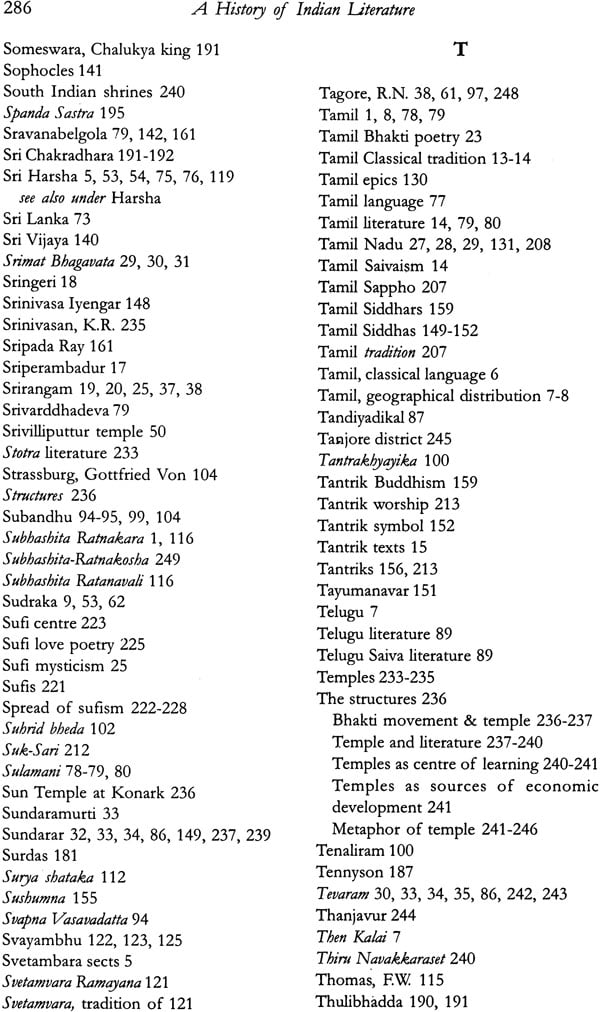
A History of Indian Literature: 500-1399 (From the Courtly to the Popular)
Book Specification
| Item Code: | IDG321 |
| Author: | Sisir Kumar Das |
| Publisher: | SAHITYA AKADEMI, DELHI |
| Edition: | 2020 |
| ISBN: | 8126021713 |
| Pages: | 315 |
| Cover: | Hardcover |
| Other Details | 9.5 |
Book Description
About the Book:
A prequel to A History of Indian Literature 1800-1910 by the same author, the present volume deals with the first nine hundred years of the medieval period of Indian literary history. The literary scene in India during the period presents a fantastically varied and wide spectrum of thought and expression, here vibrant, there dull, now vigorous and natural, now sophisticated and recondite, at once sublime and crude. It is amazing both in quality and quantity, produced in many languages, some interrelated and interdependent, sharing the same tradition, some distinctly separate and stubbornly resisting any possible influence of the other. As in other periods, so in the medieval period, there is a co-existence of different literary traditions, some old, refusing to die out, some dominant and popular, and some new struggling to assert themselves.
Radically different from all existing models of literary history, A History of Indian Literature is an account of the literary activities of the Indian people carried through in many languages and under different social conditions. It is the story of a multilingual literature, a plurality of linguistic expressions and cultural experience and also of the remarkable unity underlying them.
About the Author:
Sisir Kumar Das (1936-2003) was the Tagore Professor in the Department of Modern Indian Languages at Delhi University till 2001. A poet, playwright, children's writer, scholar and linguist, he authored several books in Bengali and English, including The Shadow of the Cross: Hinduism and Christianity in a Colonial Situation (1974) and The Artist in Chains: The Life of Bankim Chandra Chatterjee (1986), both of which won him Rabindra Puraskar, the highest literary award of the West Bengal Government. He also edited The English Writings of Rabindranath Tagore in three volumes, published by the Sahitya Akademi in 1996.
| Foreword | xi | |
| Abbreviations | xiii | |
| | ||
| 1. The Foundation of Medieval Indian Literature | 1 | |
| I. PERIODIZATION | 1 | |
| II. THE LINGUISTIC SCENE | 3 | |
| III. AUTHORS-AUDIENCE-PATRONS | 8 | |
| IV. THE CLASSICAL HERITAGE OF THE MEDIEVAL PERIOD | 11 | |
| V. TWO STREAMS OF PHILOSOPHICAL THOUGHT | 17 | |
| VI. THE POLYPHONY OF MEDIEVAL INDIAN LITERATURE | 20 | |
| VII. THE ADVENT OF MUSLIM POWER AND LITERATURE | 23 | |
| | ||
| 2. The Bhakti Movements: The Poetry of Ecstasy | 27 | |
| I. THE BEGINNINGS | 27 | |
| II. THE GREAT WORKS OF BHAKTI | 30 | |
| III. THE NAYANMARS | 31 | |
| IV. THE ALWARS | 36 | |
| V. MANIKKAVASAHARA | 44 | |
| VI. ANDAL: THE BRIDE OF KRISHNA | 48 | |
| VII. SOCIAL CONCERNS OF THE SAINTS | 50 | |
| | ||
| 3. The World of Sanskrit Plays and Others Traditions | 52 | |
| I. A WORLD OF VARIETIES | 52 | |
| II. CONTINUITY AND INNOVATIONS | 53 | |
| III. SOCIAL REALITY AND EXTERNAL FEATURES | 65 | |
| IV. THE DECLINE OF THE ELITE TRADITIONS: THE RISE OF THE POPULAR THEATRE | 68 | |
| | ||
| 4. Epic History Hagiography | 70 | |
| I. THE COURT-EPICS | 70 | |
| II. EPIC IN TAMIL | 77 | |
| III. TOWARDS HISTORY | 81 | |
| IV. HAGIOGRAPHIES | 85 | |
| V. A SIVA POEMS AND SAIVA BIOGRAPHIES | 89 | |
| | ||
| 5. The Prose Narratives and the Short Verses | 92 | |
| I. THE GADYA KAVYAS | 92 | |
| II. THE WONDERFUL WORLD OF TALES AND FABLES | 99 | |
| III. CHAIN OF STORIES | 102 | |
| IV. THE GREAT TREASURY | 104 | |
| V. JAIN NARRATIVES | 106 | |
| VI. A CROWD OF STARS | 109 | |
| | ||
| 6. The Ramayana: Its Configurations | 118 | |
| I. MODES OF TRANSMISSION | 118 | |
| II. NON-BRAHMANICAL TRADITION OF THE RAMAYANA | 119 | |
| III. PLAYS ON THE EPIC THEMES | 127 | |
| IV. PHILOSOPHICAL POEMS ON THE RAMAYANA | 128 | |
| | ||
| 7. Transcreations of the Epics | 130 | |
| I. POPULARITY OF THE RAMA LEGEND IN THE SOUTH | 130 | |
| II. IRAMAVATARAM OF KAMBAN | 131 | |
| III. LATER POETS OF THE RAMAYANA | 137 | |
| IV. THE MAHABHARATA | 139 | |
| V. THE RAMAYANA IN MALAYALAM | 145 | |
| VI. THE RAMAYANA IN ASSAMESE | 145 | |
| | ||
| 8. Literature of the Non-Conformists | 148 | |
| I. SIDDHARS | 148 | |
| II. THE SAHAJIYAS | 155 | |
| III. THE VIRASAIVAS | 161 | |
| | ||
| 9. Krishna and Radha | 172 | |
| I. THE BHAGAVATA PURANA | 172 | |
| II. THE GITAGOVINDAM | 183 | |
| | ||
| 10. Innovations in Modern Indian Languages | 189 | |
| I. EXPERIMENTS OF THE JAIN POETS | 189 | |
| II. THE BEGINNINGS OF MARATHI LITERATURE | 191 | |
| III. POEMS OF LAL DED | 193 | |
| IV. JNANESWAR | 197 | |
| | ||
| 11. Developments in Modern Indian Languages | 206 | |
| I. THE ORAL SOURCES | 206 | |
| II. THE DEVELOPMENT OF LYRICS AND NARRATIVE | 211 | |
| III. GROWTH OF LOCAL CULTS AND REGIONAL TRADITIONS | 213 | |
| IV. MAJOR FORCES REGULATING LITERARY PRODUCTION | 220 | |
| V. SPREAD OF SUFISM | 222 | |
| | ||
| 12. The Spaces in Medieval Indian Literature | 229 | |
| I. THE COURT AND THE TEMPLE | 229 | |
| II. THE TEMPLES: VARIOUS IDEAS | 233 | |
| III. MYSTIC FORMS OF GODS | 246 | |
| Notes | 250 | |
| Index | 271 | |
| Bibliography | 290 | |





















